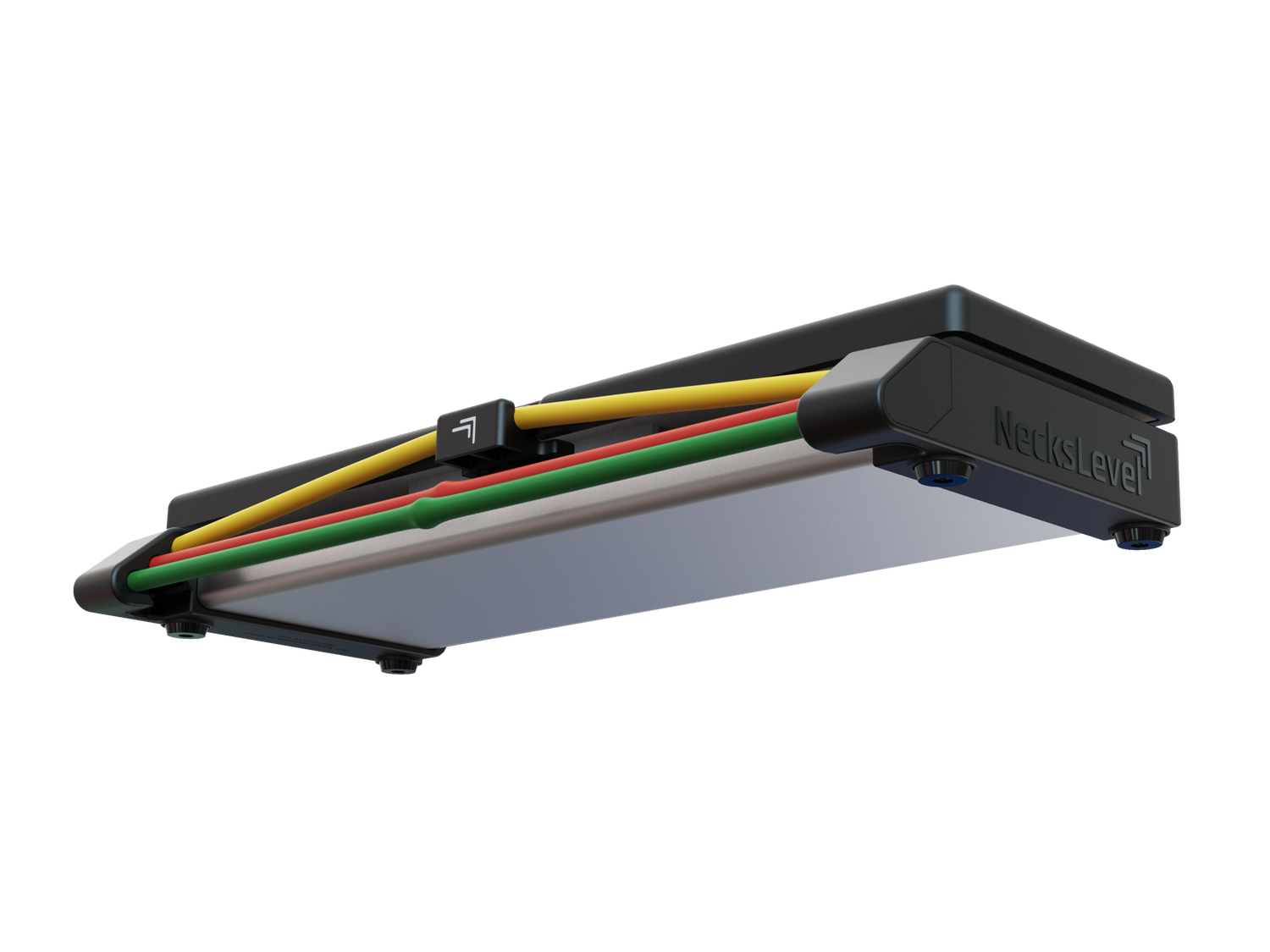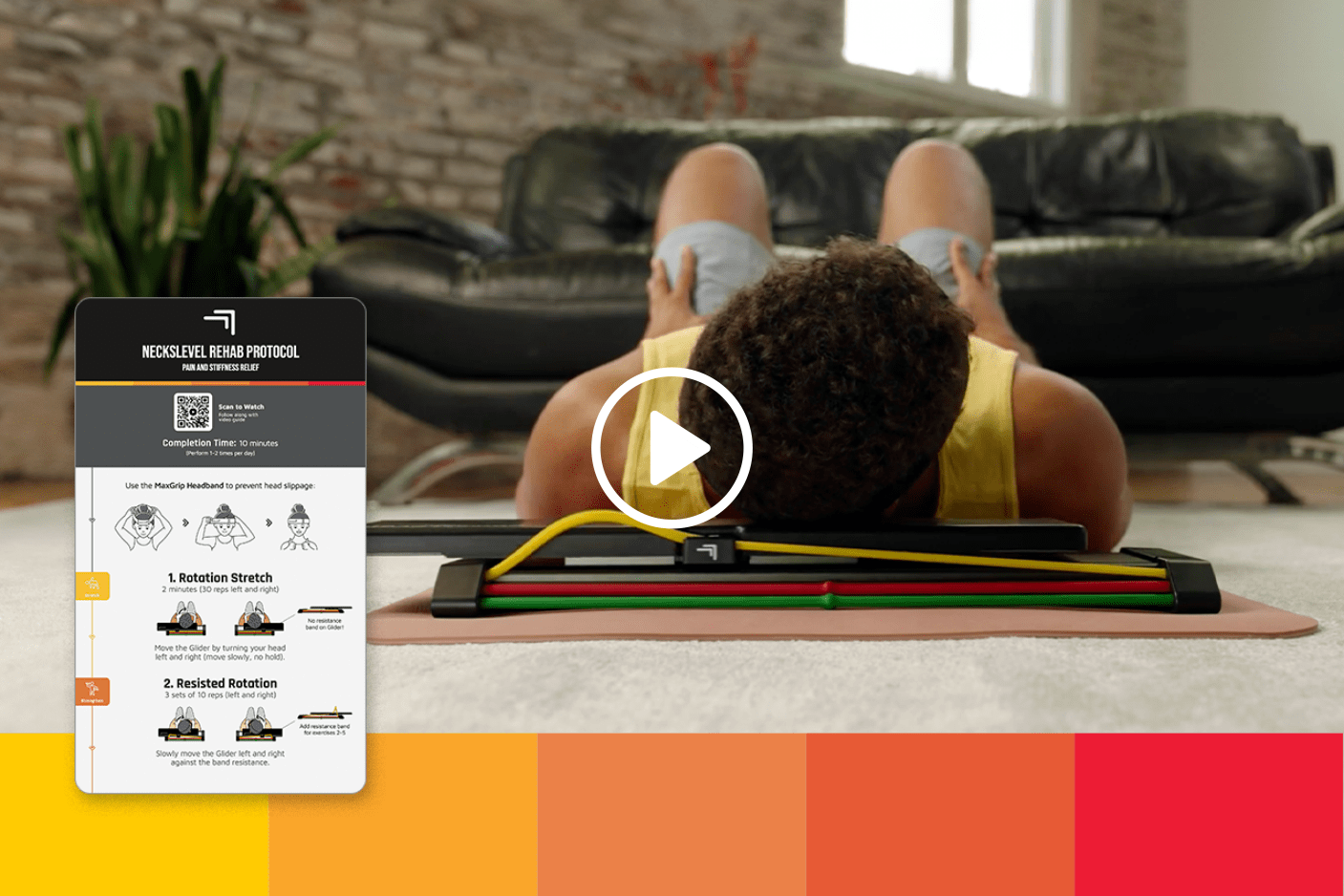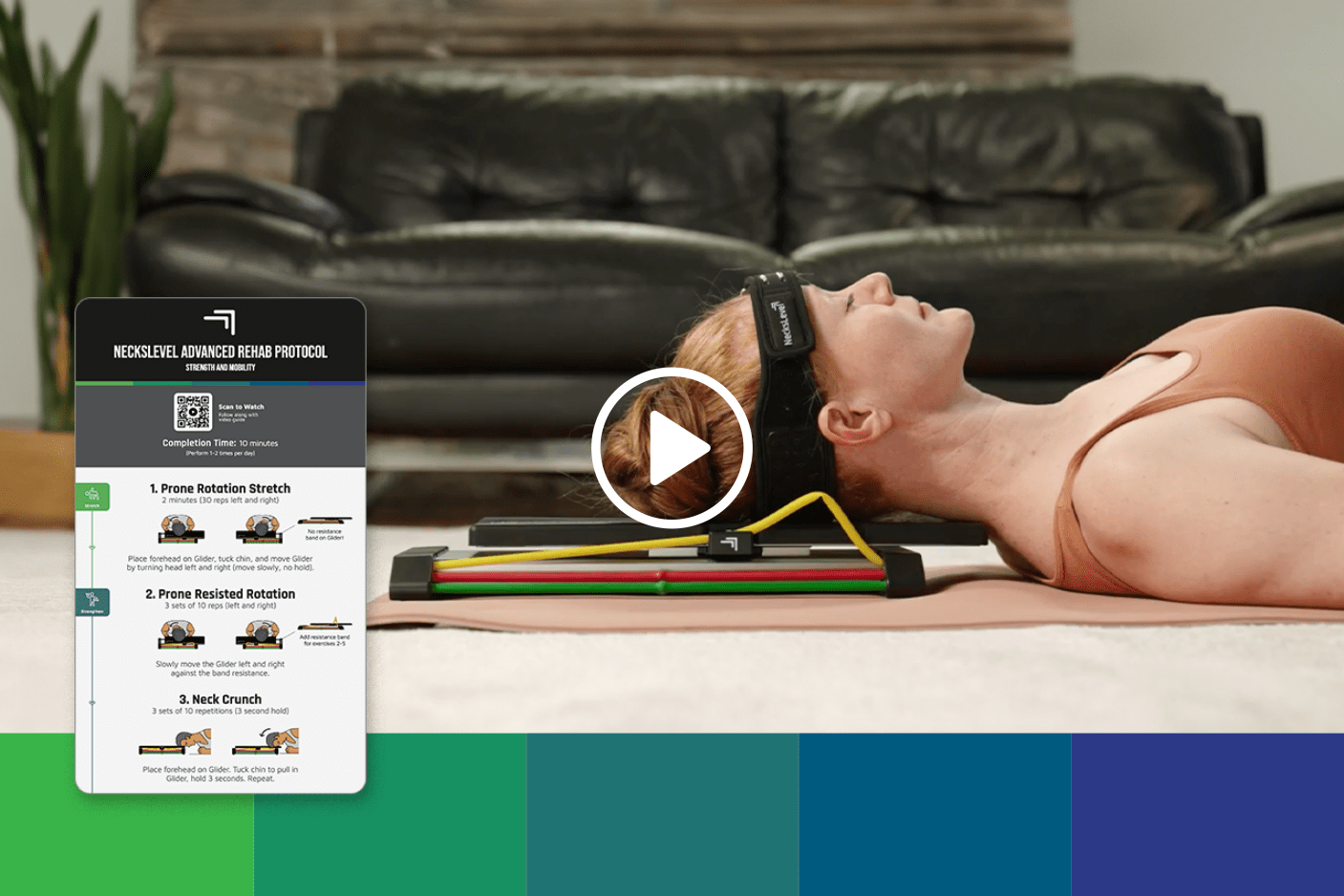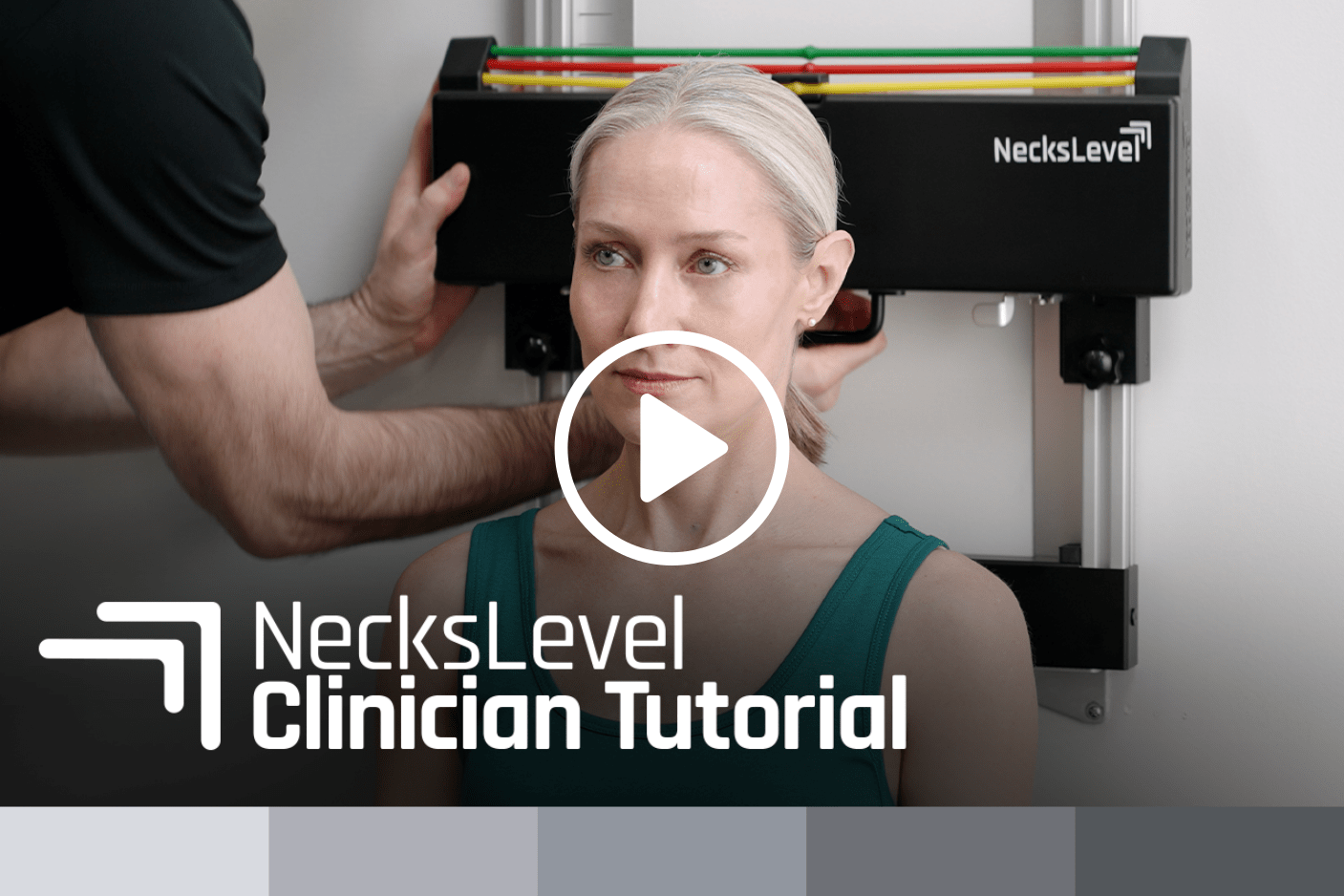Okay so you, or your patient are now comfortable using the NecksLevel device. Maybe you started with the 3 Foundational Exercises that I discussed in detail here. If you’re not familiar with the 3 Foundational Exercises, which include Rotation Range of Motion, Rotator Strengthening, and Isometric Holds, watch this video to get up to speed.
Now it’s time to build neck strength, and I’m going share with you the exact sequence of exercises that I use with my patients. We’ll delve into set and rep schemes, and selecting the correct resistance levels for the best results.
Chin Tucks
First, let's discuss chin tucks. Traditional deep neck flexor exercises on a pillow or in sitting will often require significant cueing from clinicians to isolate the motion, and their form will quickly fall apart as soon as the clinician walks away. Not to mention the fact that 78% of patients get self-conscious about their appearance lying there tucking their chin, looking like a turtle. Chin tucks are a tough sell for many patients, and it's certainly understandable. Now, with the NecksLevel device, both you and your patient can be confident in your deep neck flexor strengthening program. Start without a resistance band on the platform, and have your patient tuck their chin and come back to neutral. So long as the board is sliding, their form is perfect. Seriously, try to mess up a chin tuck on the NecksLevel device. It’s impossible.
I like to start loaded chin tucks (resistance band attached to platform, headband on) after 1-2 sessions. Begin with light resistance and make sure they can feel the effort deep in the front of their neck. Watch out for flaring of the rib cage during the chin tuck. Getting the patient into hooklying or even double knees to chest can help prevent said rib flare.
Helpful Tips:
-Preload the resistance by pre-positioning the platform a few inches off-center, away from the patient. Now you have constant deep neck flexor resistance
-Make sure the headband is on tight, and perched on their ears like sunglasses. This keeps the headband from sliding
Sets and Reps: 1 set of 15-20 repetitions with a 3 second chin tuck hold
Resistance: Start with Yellow, and increase resistance every 2-3 sessions
Rotator Eccentrics
There is no shortage of neck muscles responsible for rotation of the neck. By my calculations, roughly 60% of all neck muscles are responsible, at least in part, for neck rotation. With that in mind, neck rotator strengthening becomes very important, if your goal is to strengthen the neck. I wrote an article all about the neck rotators here. I believe this exercise, Rotator Eccentrics, is the single best exercise available on the NecksLevel device, and for that matter anywhere. If I could only do one exercise for my neck, or for my patient’s neck, I would choose this one.
It’s just one of those exercises you have to feel for yourself. You can feel your entire neck kick into gear. Keeping a chin tuck will guarantee proper form. You, or your patient, will feel true muscle fatigue of the neck rotators and it’s a strange, but enjoyable feeling.
Helpful tips:
-Stabilize the base of the NecksLevel with the opposite hand during platform preloading
-Hold the neck in neutral for a few seconds between reps. This helps build neck awareness.
Sets and Reps: 2 sets of 10 repetitions on Left and Right
Resistance: Start with Yellow, and increase resistance every 2-3 sessions
Lateral Flexor Eccentrics
So far we’ve discussed targeting the deep neck flexors and rotators of the neck. To round it out, let’s strengthen the lateral flexors. This movement may take some practice. For many, it is difficult to isolate this lateral flexion motion on the NecksLevel device, but it can be a very worthwhile exercise. It requires focus to maintain a chin tuck, avoid rotating the neck, and then sidebend with control. We’re asking the deep neck flexors to work isometrically, as the lateral flexors work concentrically/eccentrically.
This is an excellent exercise for building awareness of a good, neutral neck posture throughout the day. Having the patient repeatedly find neutral, and then hold it, builds muscle memory for attaining good posture. It’s not just me saying this either. I’ve heard patients report they’ll often correct their posture throughout the day when they feel like they're slouching. They report their neck seemed to remind them to get back into a healthier posture. And of course, this was not the norm for them prior to training on the NecksLevel neck exerciser. You’ll just have to feel it for yourself, and listen to your patient’s feedback.
Helpful Tips:
-Cue the patient to keep their nose pointed straight up at the ceiling
-Hold in neutral for a few seconds between reps
Sets and Reps: 2 sets of 10 repetitions on Left and Right
Resistance: Start with Yellow, and increase resistance every 2-3 sessions
NecksLevel Strengthening Protocol
If you like Protocols, here is a nice neck strengthening progression to help inform your practice. Note that an average neck strengthening session on the NecksLevel takes just 5 minutes. Be careful not to overwork the neck on Day 1, given that these neck muscles have never experienced a similar demand. I would only progress one exercise per session, as opposed to jumping from yellow to red across all exercises on the same day.






